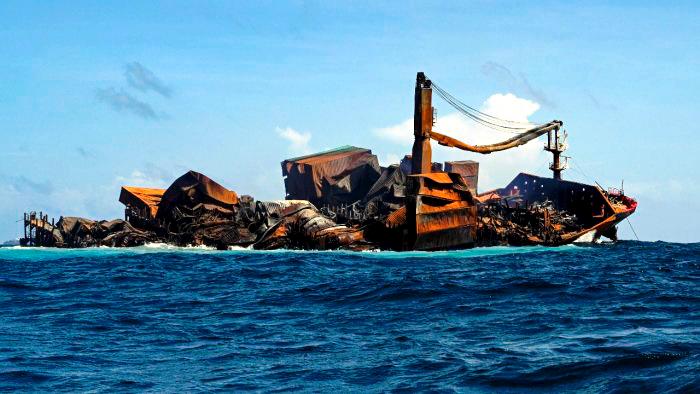PETALING JAYA: Local players want to get a bigger slice of the marine salvage pie and are asking the government to give them a hand.
Bumi Jaya Salvage and Engineering Sdn Bhd director Datuk Ng Ban Hock said Malaysia could require foreign salvage companies to engage local partners when they work in Malaysian waters, as is being done in Indonesia.
Ng added the government should also make it a requirement that all fees be paid to a local partner before the portion due to a foreign partner is disbursed.
He said this could help the government recover millions of ringgit in taxes that it would otherwise lose.
Unlike Indonesia, foreign companies dominate the salvage operations business in Malaysian territorial waters, the size of which is estimated to be about 500,000sq km.
The salvage operations business is said to be worth billions given that the Straits of Malacca is also one of the busiest shipping lanes in the world.
There has been a steady increase in shipping traffic in the straits. Last year, 141,000 vessels passed through the straits, up from 55,957 in 2000.
According to a 2010 BBC report, the volume of navigational traffic through the Straits of Malacca is six times that of the traffic that goes through the Suez Canal.
Foreign operators are currently allowed to engage in salvage operations in Malaysian waters but are paid by their clients outside the country, thereby avoiding taxes in Malaysia.
Ng said local operators are equally skilled in managing such operations, as seen in the past two years when the Covid-19 pandemic discouraged or prevented foreign players from working in Malaysian waters.
He cited the case of the Malta-registered bulk carrier MV Galapagos as an example.
On July 11, the vessel experienced steer system failure, causing it to collide with Britain-registered cargo ship MV Zephyr Lumos near the mouth of Sungai Muar.
According to the Johor Malaysian Maritime Enforcement Agency director First Admiral Nurul Hizam Zakaria, both vessels collided 14.1 nautical miles south-west of the Sungai Muar estuary.
The MV Zephyr Lumos was on its way to the Suez Canal, while the MV Galapagos was heading for India when the collision occurred at 12.03am on July 11.
Bumi Jaya was engaged to manage the salvage operations, which came as a surprise to many.
“Most had expected a Singapore-based company to take on the task,” Ng said,
He added that it showed that local players also have the capability to handle such operations.
“We only need the insurers to place their faith in us and agree to cover salvage operations by local operators.”
The marine salvage business is a capital-intensive enterprise.
Ng said a state-of-the-art salvage vessel could cost more than US$50 million (RM213 million).
Bumi Jaya was set up 10 years ago with assets valued at only RM1 million but today the value has risen to RM5 million.
However, banks are reluctant to offer loans for those going into the salvage business, forcing most players to dig deep into their own reserves to expand, said Ng.
“Granted, we still do not have the capacity to take on big operations, but a requirement for foreign companies to engage a local partner could help the industry grow in Malaysia, and we could even become a major global player.”
He said given the high number of vessels passing through the Straits of Malacca, the government should encourage the growth of the industry instead of having shipping lines look to Singapore for their services.
Ng noted that the maritime industry is very important to Malaysia as 90% of its exports are by sea.
A government boost to the marine salvage operations business could make Malaysia a major global player. – AFPPIX










